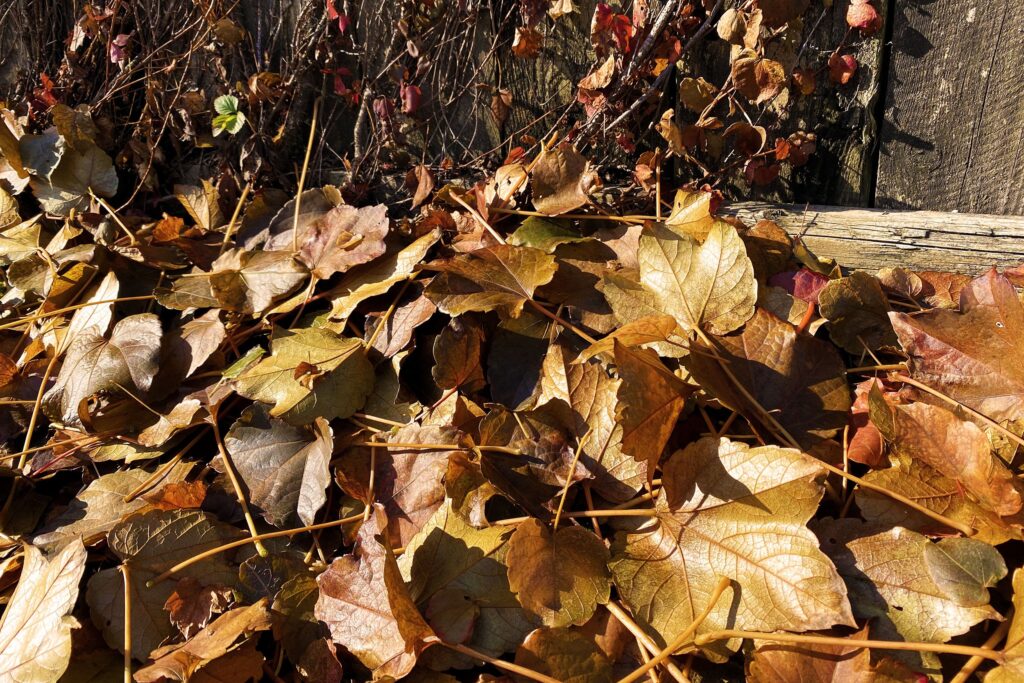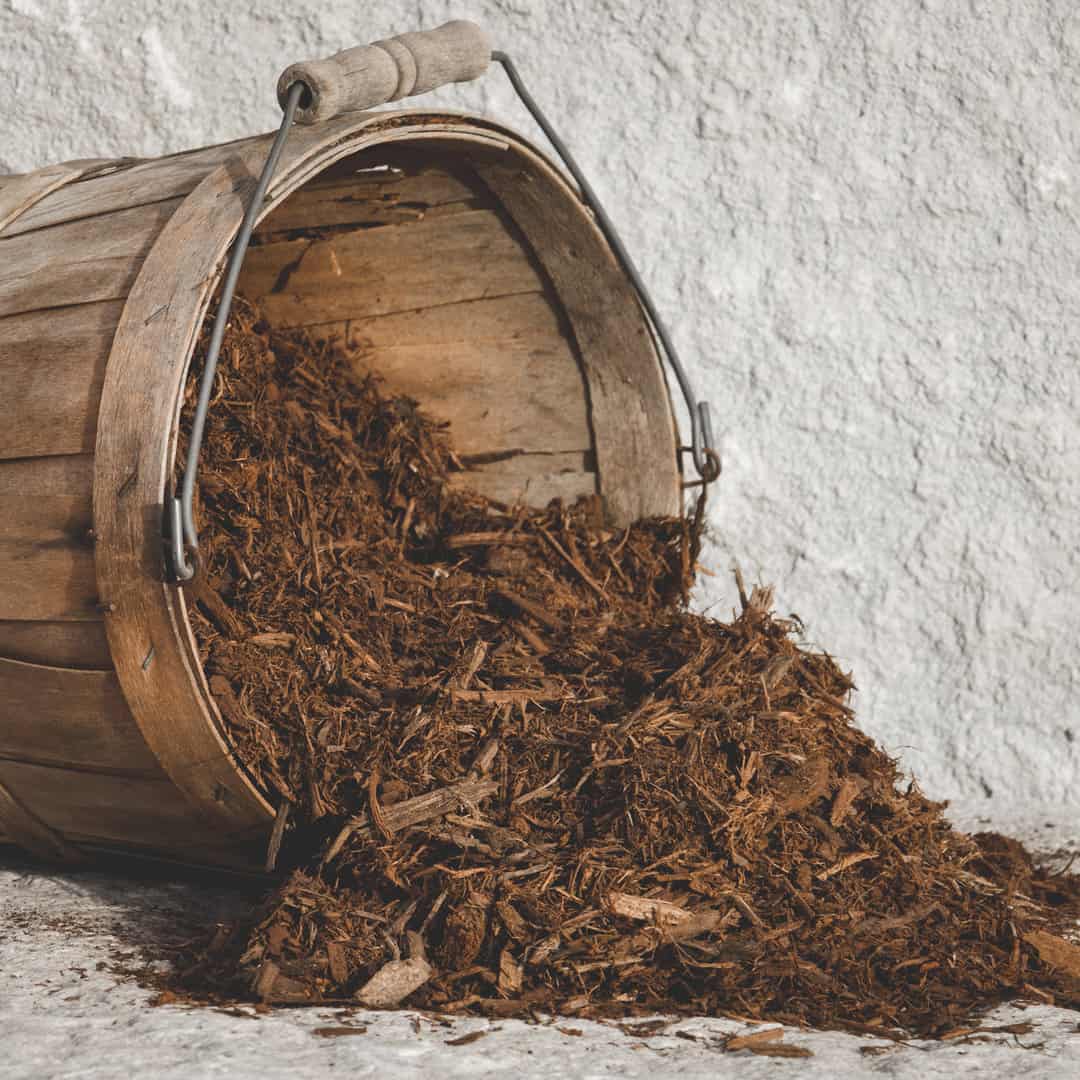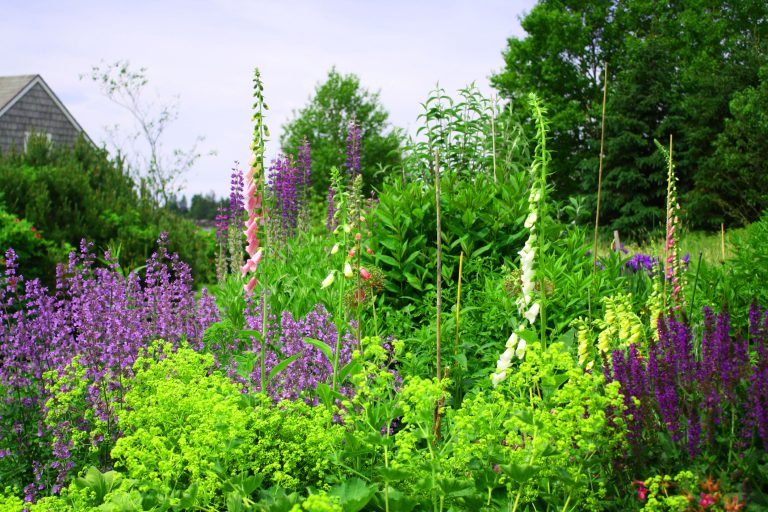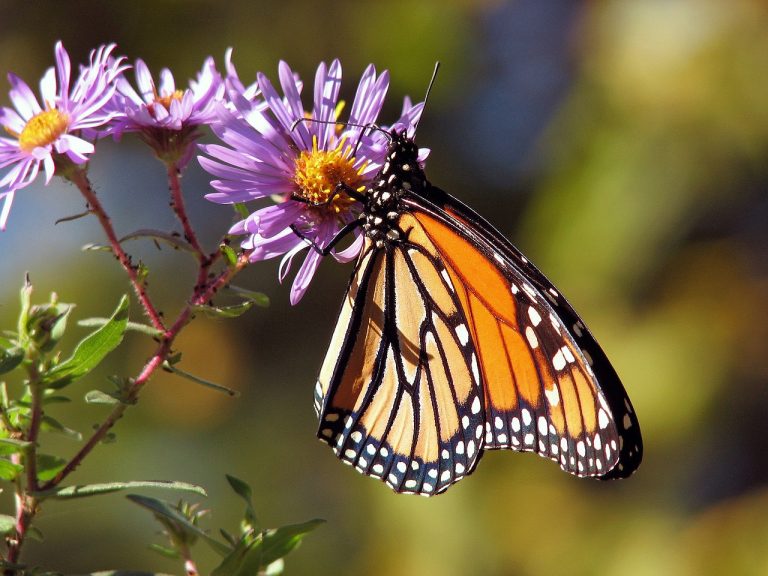

Winter is just around the corner and mornings are now marked by the frost of cold months, meaning that it’s time to start thinking about your fall cleanup. If you haven’t already completed your cleanup, don’t worry, there’s still time to prep your landscape for overwintering, and still time to ensure that your plant material will be as vibrant and healthy as possible next year. Fall cleanups are a simple task that goes a long way to protect your landscape, and can be broken up over the course of several days if you can’t get to it all at once. Below are a few tips for what to focus on when cleaning up your yard.
Leaves off of the lawn, or raking up your tree’s fallen leaves is probably the most recognizable part of a fall cleanup. Raking leaves into piles, for jumping into, composting or otherwise, is probably one of the more iconic fall time images to imagine. Depending on the size of your lawn, this task can be done in a day, or over the course of the fall as different kinds of trees drop their leaves at different times. However you decide to rake up your leaves, just know that this is essential not only for aesthetic purposes, but for the health of your lawn and landscape as a whole. Un-raked leaves give moisture a place to still, shielded from the sun. An abundance of moisture, that isn’t evaporating, under organic material, creates ideal conditions for mold. Mold is not something that you want in your landscape, lawn or plant beds, so be sure to rake up leaves before they have much time to build up. Do a little raking here and there until there are no more leaves to drop, and you’ll keep ahead of any mold spores.
Cutting back perennials optimizes your plants to grow healthily next year, helps them conserve energy during the winter and minimizes the potential for your plants to get infected with disease. Not all perennials need to be cut back, and all can technically be left to winter without being cut back. Even still, perennials like grasses, hostas, irises and hydrangea paniculata/arborescens will all benefit from a fall trim. As explained by PennState Extension, “cut back hostas and remove all their leaves from the ground as soon as the frost takes them. Dead hosta leaves harbor slug eggs that will hatch and ruin next year’s greenery.” Take your time with cutting back perennials, as energy is transferred from the stems and leaves of the perennial to the root system, for overwinter storage, during fall.
Cutting back perennials too early will stunt this transfer of energy. As explained by PennState Extension, “Don’t be in a hurry to rush outside and cut plants back. Unless the plant is diseased or infected, wait until several hard frosts have killed back the tops. In the spring, the plant sends up energy from its roots to produce beautiful foliage and blooms. Allow the roots time to reclaim that energy from the dying plant, keeping it strong for re-emergence in the spring.”
For perennials that you can leave for winter, without cutting back, think of what will add interest to your winter landscape, what will provide food for birds/animals, and what can provide shelter for birds/animals. Echinacea, or coneflowers, can be left for winter, as their seeds provide food for birds, and can provide shelter in the snow. Similarly, Rudbeckia (black eyed susans) and oxeye sunflower will provide feed for overwintering animals and birds. Large, structural grasses can be left until spring, as they will provide protection to birds, insects and animals that need it.
Prune summer perennial shrubs, or anything that blooms before Mother’s Day. Don’t cut them all the way back, but by giving them a slight trim before winter, you’ll be cleaning them up and optimizing them for best growth early next year. Look for dead growth, uneven growth or diseased growth. If there are still dead blooms on these shrubs, feel free to cut them off and add them to your compost pile. Again, you aren’t cutting these back like you would a hosta (all the way to the ground), but more so cleaning them up for next spring’s growth.
Start with these three tasks and your landscape will be more than prepared for the winter months. Break the tasks up into a few weekends, and you should be able to tackle a task as you find free time. Everything doesn’t have to get done all at once on the same day. Rake your lawn as needed until leaves stop falling, cut back the perennials that really need it (hostas, irises, plox, hydrangea, etc), and prep early growth shrubs for spring next year. A fall cleanup shouldn’t stress you out, and completing yours over a few weekends will give you ample time to take stock of your lawn and what it needs for next year.
Whispering Hills Garden and Landscape Center is a full service landscape center and nursery located in Cary, Illinois. Stop in today for our full selection of hydrangeas and perennial shrubs, now 50% off until end of season (Updated: 11/3/21).
Shop Archive



In an era where sustainability is more than a buzzword, Whispering Hills Garden Center

June is National Pollinator Month, a perfect time to celebrate the essential role pollinators